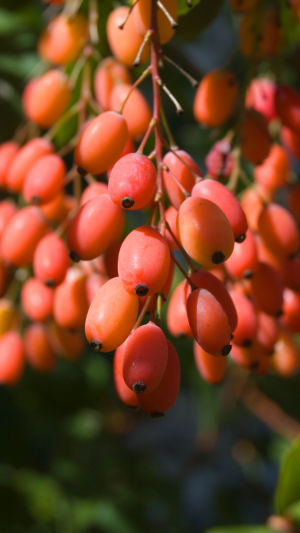Barberries, the small but potent fruit of the Berberis shrub, have captivated cultures across the globe for centuries.
With a tart flavor and vibrant red color, these tiny berries pack a punch in both culinary and medicinal realms.
From ancient traditions to modern gastronomy, barberries have left an indelible mark on cuisine and culture worldwide. Native to regions spanning from Europe to Asia, barberries have long been cherished for their versatility and distinct taste. In Persian cuisine, dried barberries, known as “zereshk,” are a staple ingredient, adding a tangy brightness to dishes such as rice pilafs and stews. Their ruby-red hue not only enhances the visual appeal of these dishes but also lends a unique flavor profile that balances savory and sour notes.
Beyond the culinary realm, barberries boast a rich history in traditional medicine. In Ayurvedic and Unani practices, the berries are prized for their purported health benefits, ranging from aiding digestion to promoting cardiovascular health. Rich in antioxidants and vitamin C, barberries are believed to possess immune-boosting properties, making them a popular choice for herbal remedies and dietary supplements.
In recent years, barberries have gained traction in Western cuisine, thanks to their distinctive flavor and versatility. Chefs and home cooks alike have embraced these tart berries as a way to add depth and complexity to a wide range of dishes. From savory sauces and marinades to baked goods and desserts, barberries lend a unique twist to both sweet and savory recipes.
All About Japanese Barberries
Video by HortTube with Jim Putnam
One notable example of barberry’s culinary versatility is in the Persian dish “Zereshk Polo,” a fragrant rice pilaf studded with plump, tangy barberries. This iconic dish is often served on special occasions and celebrations, showcasing the berry’s ability to elevate simple ingredients into a culinary masterpiece.
In addition to their culinary appeal, barberries are valued for their ornamental qualities. The Berberis shrub, with its delicate yellow flowers and vibrant red berries, adds visual interest to gardens and landscapes. In autumn, the foliage of the Berberis shrub transforms into a riot of fiery hues, ranging from golden yellows to deep reds, making it a popular choice for seasonal landscaping.
Despite their culinary and aesthetic appeal, barberries have also sparked controversy due to their potential impact on the environment.
In certain regions, such as North America and parts of Europe, certain species of Berberis shrubs have been classified as invasive plants. These aggressive plants can outcompete native vegetation and disrupt local ecosystems, leading to concerns about biodiversity loss and habitat degradation.
To mitigate the spread of invasive barberry species, efforts have been made to promote the use of non-invasive alternatives in landscaping and gardening. Additionally, conservationists and policymakers have implemented measures to control the cultivation and sale of invasive barberry varieties, aiming to minimize their ecological impact while preserving their cultural significance.
Barberries occupy a unique place in culinary history and cultural heritage, with their tart flavor and vibrant color adding depth and complexity to dishes from around the world. While cherished for their culinary versatility and medicinal properties, barberries also raise important questions about environmental stewardship and conservation.
By striking a balance between culinary innovation and ecological responsibility, we can continue to appreciate the rich diversity and cultural significance of this humble yet remarkable fruit.





